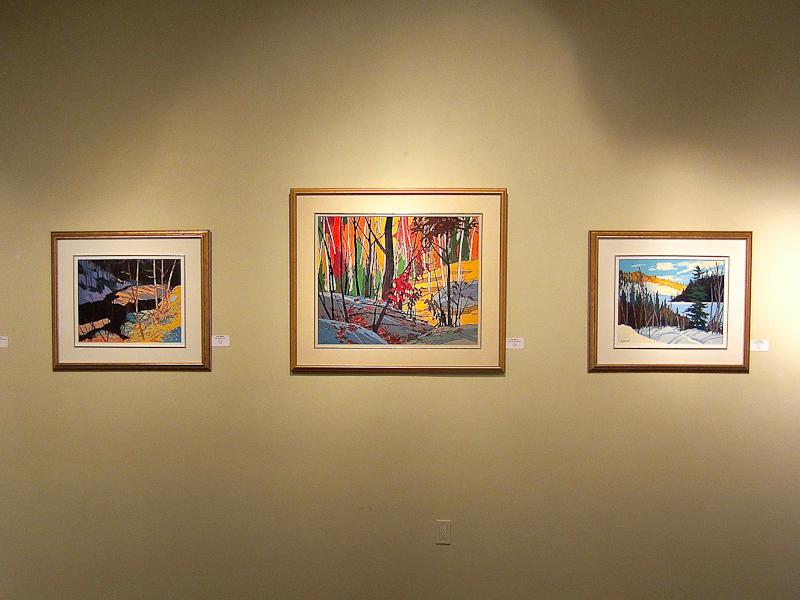A late Canadian artist’s work had its first vernissage in 35 years on Feb. 6 at Cube Gallery.
The exhibition, The Art and Drawing of Josh Silburt, held both the political cartoons of his earlier years as well as his fine art paintings of later years.
Don Monet, curator and owner of Cube Gallery, proudly stated that since the artwork has been hidden away in the vault of the Silburt family for a long time, they were happy to have them on exhibition.
Monet called the style “fabulous,” and said with its ‘70s and ‘80s influences, it had a “particular vision of the Canadian landscape.”
“I really encourage you to come out and see this amazing artist,” he said.
Allan Silburt, the son of Josh Silburt, said he reached out to various collections to bring it to fruition.
“A lot of work went into getting ready for this,” Silburt said.
Looking at the eye-catching paintings that hung on the wall, he said, “it’s the colour rather than the shape in a sense. Shapes are suggestive, but the colours reflect the mood of a painting.”
He said Josh “tried to make a living, but he was a communist, so being a political cartoonist was pretty complicated.”
After the revelations of the 1950s and the beginning of the Cold War, his father “threw all his politics away and became a landscape artist.”
“He became this completely apolitical person and it was a flowering creativity,” Silburt said. “It was no longer this conflict of identity between your political views here, what you have to write there. Now he could just express what he wanted to.”
Silburt said his father never told his story because “he was embarrassed about it.”
“His communist background was something he wanted to suppress because he lost his job and career and all that,” Silburt said.
When asked about why the exhibition was made, he said it was about exposure, which is further helped by the Internet.
“Now anyone who has a Silburt, they can go online, google Silburt, see the website, see the book, and they’ll know what the story of this art is.”
Paula Poupre, a visitor of the exhibition, admired the paintings in one corner.
“It’s very colourful, and I like the rural Canadian landscape that we see.”
Doug Cosbie, commercial artist and a visitor of the gallery had a more critical response to the exhibition.
“It’s not exactly avant-garde but it certainly holds up well. The colours are actually quite nicer than I thought they would be.”
“I haven’t found the one I’d like yet, but I’m sure there might be something here.”
Putting it into today’s perspective, Silburt summed it up while standing in the middle of the exhibition room.
“Twenty years later we can look at it and say ‘hey, that’s a very interesting story, nothing to be embarrassed about,’ and you really sense the context of who he is and what kind of artist he is.”






